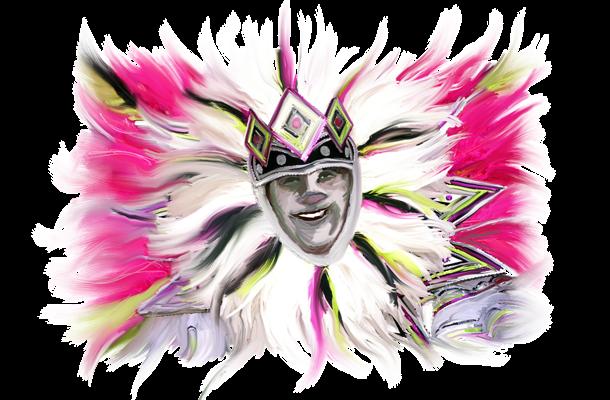
The Mummers brigades continue the Philadelphia tradition as they prepare costumes, props and performances for this year’s New Year’s Day Parade.
While many may have just started preparing for the holiday season, a certain group in Philadelphia has been planning since the second day of the new year.
The Philadelphia Mummers follow an old tradition that dates back to the mid-17th century. This combination of Irish, Finnish, Swedish, English and some African traditions includes dressing up elaborately and going door-to-door singing and dancing. Mumming derived from England’s Mummers plays that were seasonal folk dramas performed by acting troupes.
In 1901, Philadelphia decided to give mummers the option to hold a parade, in order to contain these unique performers as they went neighborhood to neighborhood. The first Philadelphia Mummers New Year’s Day Parade acted as a celebration for the new City Hall. Jan. 1, 1901 was the first official parade, and the city offered approximately $1,725 in prize money, according to mummers.com.
Since its inception, different variations of prizes–whether it is money or bragging rights–encouraged clubs to work hard and make sure their costume, dance and theme are better than the rest.
“Some groups are judged at the convention center and some at City Hall but the judges can be anybody,” Annette Granato, a member of the Clevemore fancy brigade, said. “A different panel of judges is chosen each year and it can be anybody, somebody in the city council or someone who has lived in Philly for a long time. We don’t know the judges until the day of the parade so nothing can be altered or cater to them.”
There are five divisions that a volunteer or mummer can partake in. These categories are: comic, fancy brigade, string band, fancy division and the recently added wench brigade. Each division is judged on how well its specific theme is communicated, its costumes, choice of music, choreography, set design or float design and use of props.
Comic brigades open the show using clowns, floats and whatever else possible to evoke some form of laughter. They are followed by the fancy division who showcase a variety of themes through the use of floats and other parade elements. Next to lead the parade are the string bands who are judged for their costumes but mostly on how the music depicts that theme.
The parade leads patrons to the Convention Center where the final division, fancy brigade, utilizes extravagant set designs, costumes, music and dance for an indoor performance. The wench brigade is “an offshoot of the comic division, the brigades that make up the wench brigade division are more than 100 costumed members. The wench brigades are noted for having live bands and being traditional mummers,” according to phillymummers.org.
Granato has been mumming for more than a decade and along the way has been joined by her daughter, son-in-law and grandson.
“When I first got into it, it was just me. I’ve been doing it for more than 13 years then my daughter came in and met her husband there, now my grandson’s been doing it since he was three months old,” Granato said.
Preparing and attending the parade becomes a family affair since mummers meet throughout the year to practice for the big show.
“Anyone can be a mummer but you don’t have to be pulled in by a family member,” Granato said.
Many of the executive board members for various clubs are related.
“It’s a day to celebrate, to be happy that you are with loved ones and have brought in the year safely and together,” Granato said.
After the parade ends, the winning club holds a ceremony to celebrate its victory with other clubs. The winning club’s suits and videos are left to be showcased at Philadelphia’s Mummers museum “Winning Circle” exhibit at 1100 S. Second St. for the year. The day following this event is typically a day of elections for the new year’s executive board.
Next, the members submit ideas for different themes they could possibly perform. These ideas are narrowed down to three by the executive board and given back to the members to vote on their favorite two.
“We pick our top two so that when we start to submit our themes for the year, if another club has the same idea we have a backup,” Granato said.
Costumes are a large part of the experience since a costume can be the selling point of a club’s theme. Depending on a club’s budget, a costume designer may be hired or the club will make their own costumes.
Despite budget cuts to the parade, mummers are hoping to fundraise in order to keep the tradition alive.
Alexandra Olivier can be reached at alexandra.olivier@temple.edu


Be the first to comment